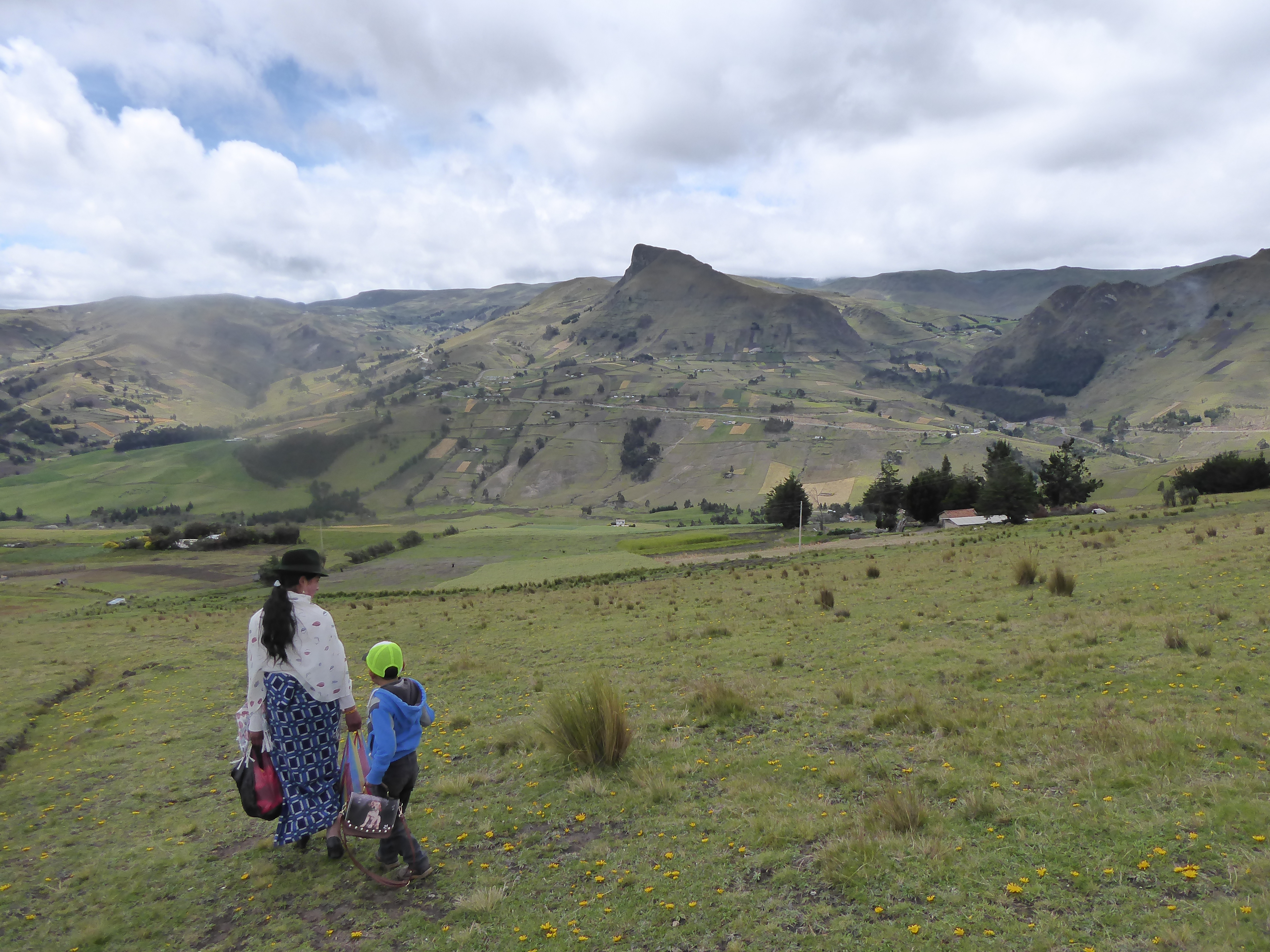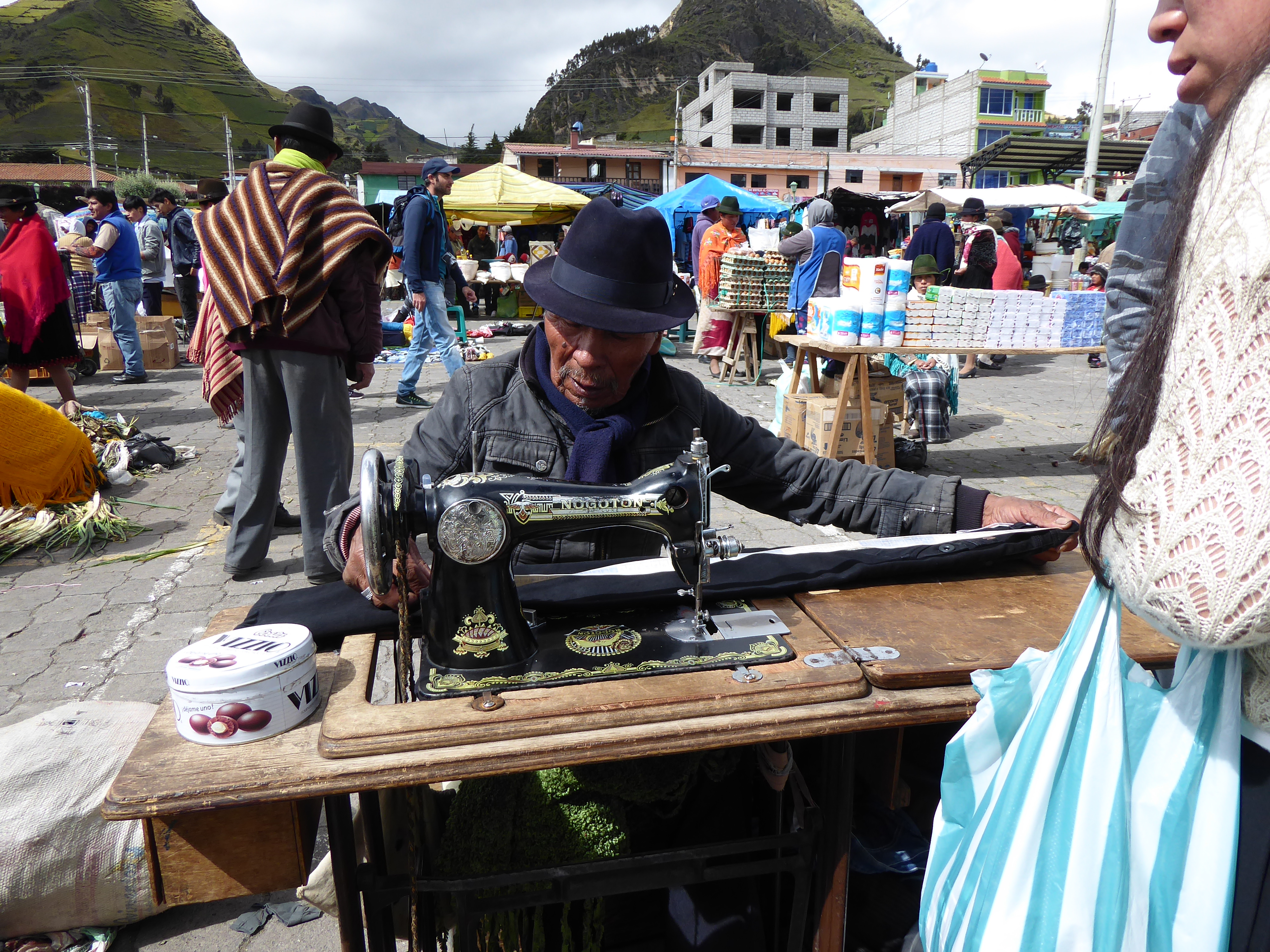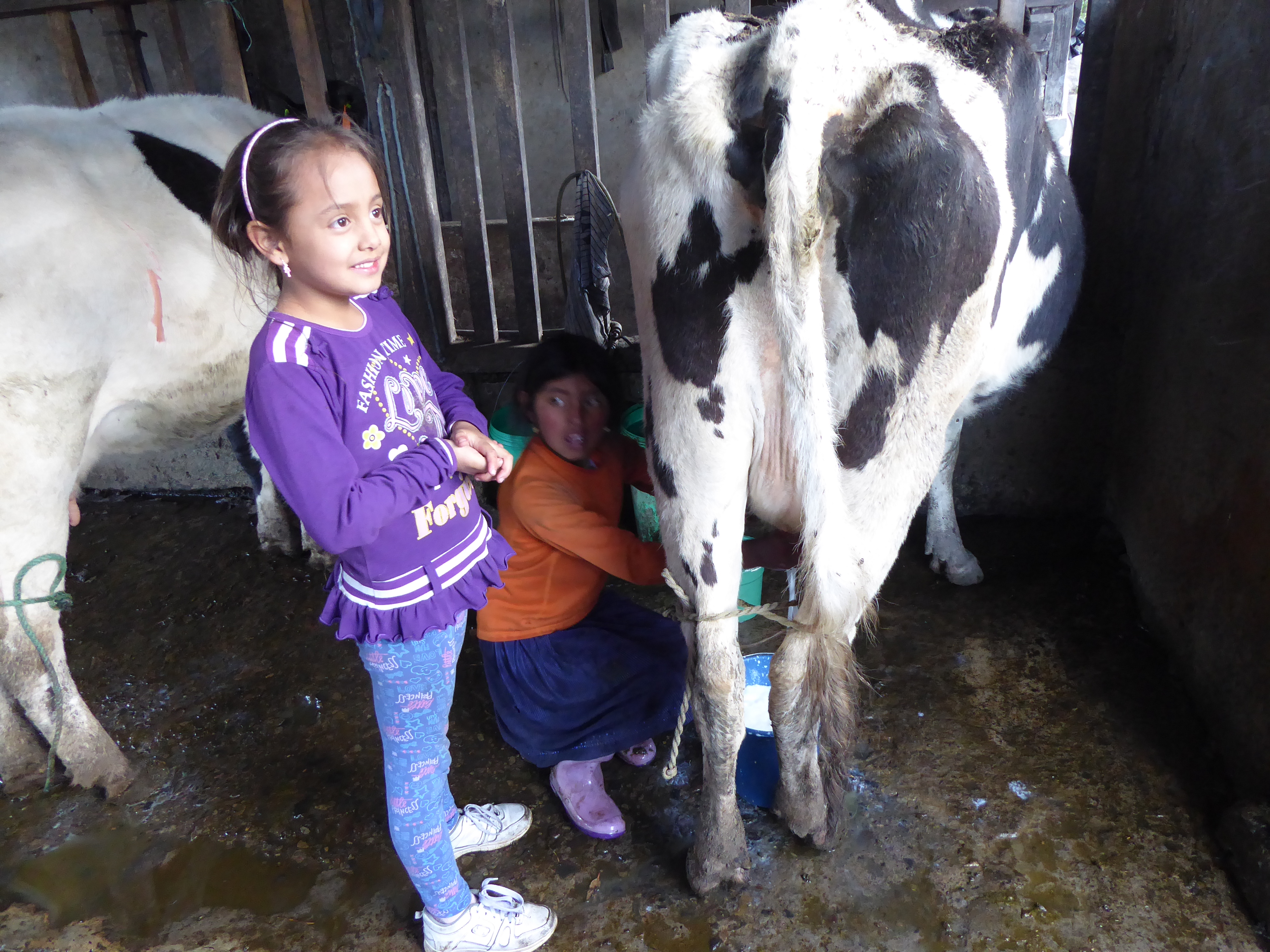 I left Cotopaxi for Latacunga-a small city with a charming colonial center-for closer access to the “Quilotoa Loop.” Although the greatest appeals of these trails are the Quilotoa crater lake and hiking from one indigenous community to another, it was also possible to visit most of the way by bus. (Buses are a vital network supplemented with paid and free hitchhiking.) This was my intention.
I left Cotopaxi for Latacunga-a small city with a charming colonial center-for closer access to the “Quilotoa Loop.” Although the greatest appeals of these trails are the Quilotoa crater lake and hiking from one indigenous community to another, it was also possible to visit most of the way by bus. (Buses are a vital network supplemented with paid and free hitchhiking.) This was my intention.
I made a reservation in Tigua at a working dairy farm to spend the night, about two hours from Latacunga and stopped in Zumbahua for the notable Saturday market. Locals come to buy and sell goods and perform services. Many of the indigenous people of Ecuador are Kichwa, speaking a language of the same name. Like most first people, they have suffered exploitation, discrimination and make up the majority of the poor. Seeking refuge during colonization many still reside outside the towns they created, living off their crops and livestock. Their dress, particularly the women, is often traditional: colorful shawls and skirts. The men are more eclectic in their attire. But almost everyone dons a hat.
The dairy farm is owned and run by a sixth generation man of Spanish origin. His well-dressed, clean wife and daughters, playing with their pet St. Bernard was in stark contrast to his staff. They were an indigenous family living in a nearby, simple dwelling protected with plastic sheets for roofing. Those daughters ten and fifteen wrangled and harnessed cow after cow, sat on small stools, their clothes muddied, as they filled buckets of milk moving their hands deftly for hours. The owner’s daughter amused herself by filling a small glass of milk from a cow that would soon yield a bucketful from still young, but more expert hands.
Those daughters ten and fifteen wrangled and harnessed cow after cow, sat on small stools, their clothes muddied, as they filled buckets of milk moving their hands deftly for hours. The owner’s daughter amused herself by filling a small glass of milk from a cow that would soon yield a bucketful from still young, but more expert hands.